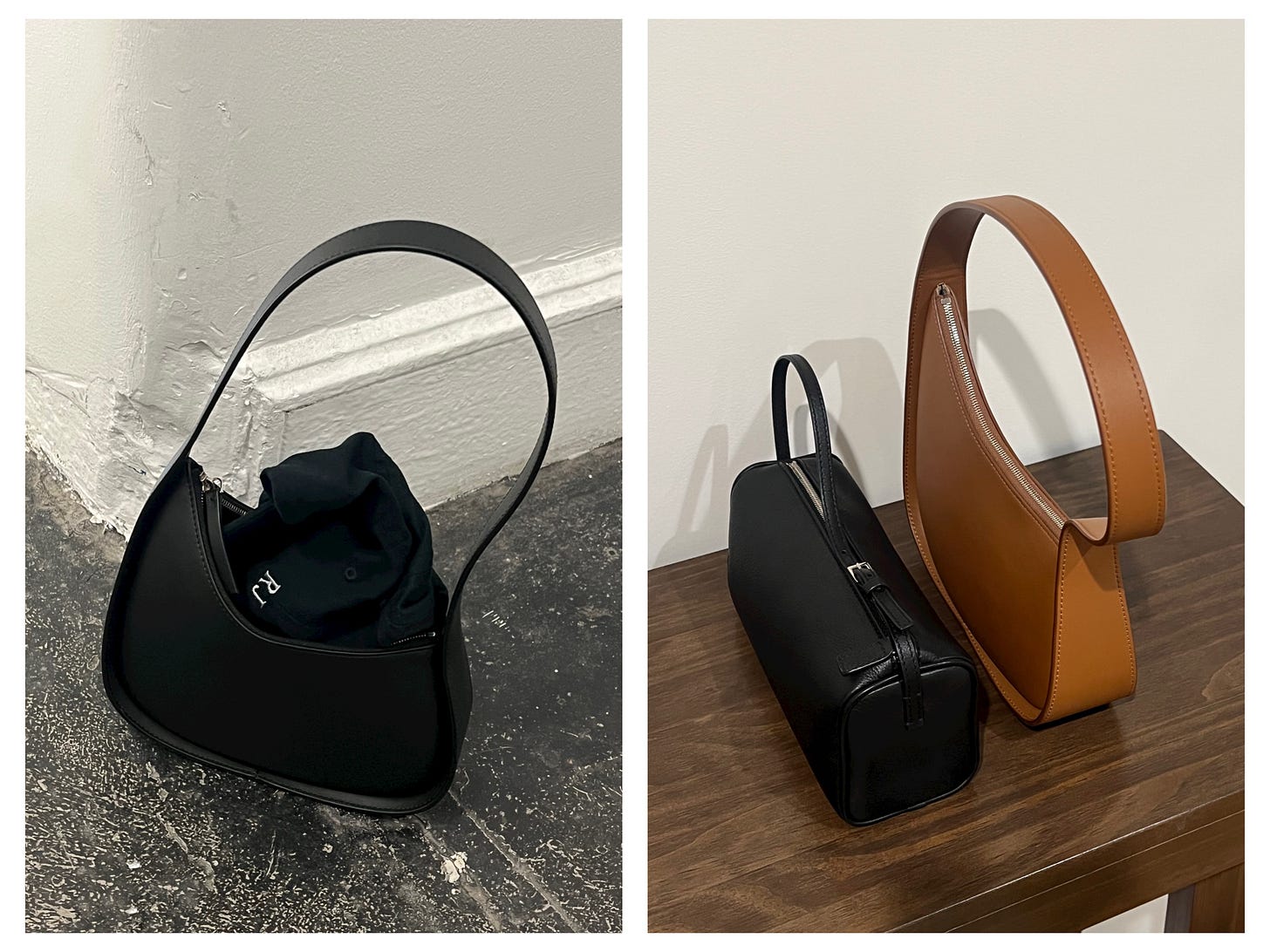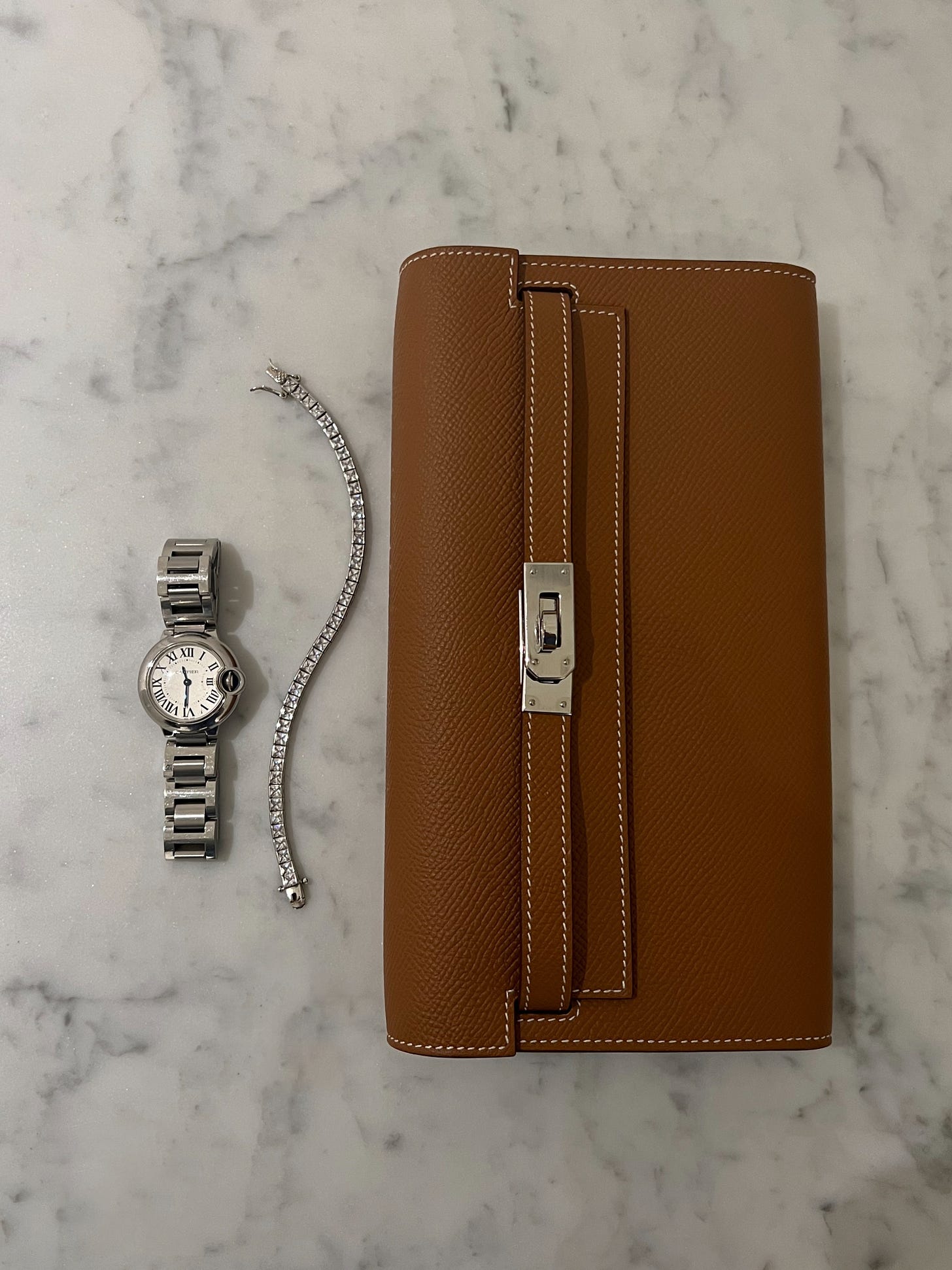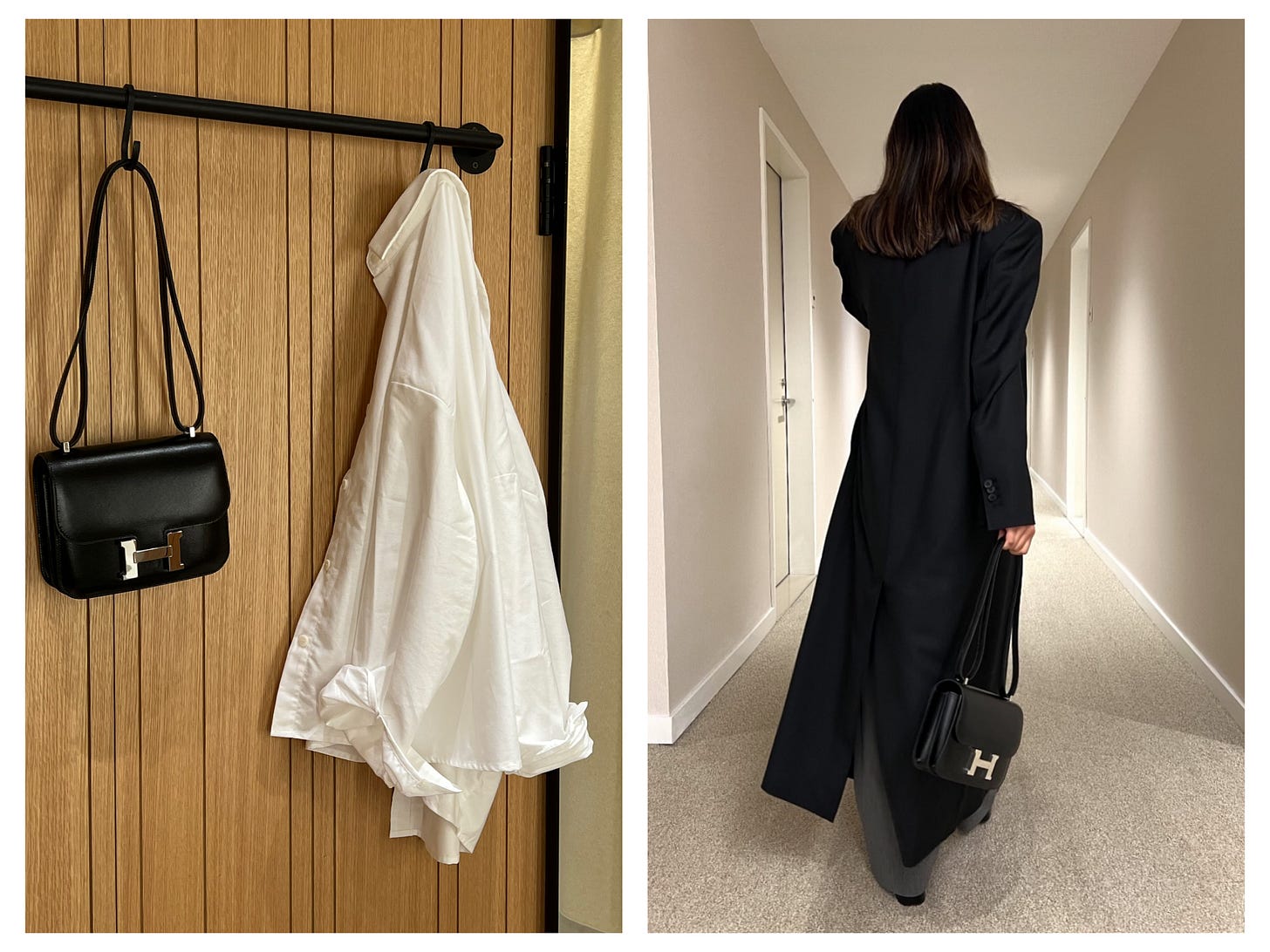The 'It Bag' Dilemma
How the constant chase for the latest trend led me to rethink and refine my collection...
I grew up watching British YouTubers across a variety of genres. One of them was Lydia Elise Millen. Admittedly, I don’t keep up with YouTube much these days and haven’t watched her content in years. She recently uploaded a video titled “Selling my Hermès Bags | The End of an Era & Unboxing the British Birkin.” My interest was piqued. The video delivered exactly what the title promised, with an added twist: Lydia was launching her own handbags in collaboration with another brand, followed by the unboxing of a pre-loved Mulberry bag.
You could debate whether her decision to sell her bags was a marketing tactic, but she raised some very good points about luxury bags, which got me thinking. Lydia’s channel became popular largely due to luxury handbag unboxings—at one point, she was showcasing new bags several times a month. Over time, she built an extensive collection, but a few years ago, she edited it down significantly.
Whatever her motives, a lot of what she said resonated with me. While I never had the volume or variety of bags she did, I owned significantly more than I wanted, needed, or, most importantly, used. Last year, I went through a similar editing process, cutting my collection in half from twenty to ten. Ten bags might still sound excessive, but each piece serves a purpose in my wardrobe and gets constant heavy rotation.

Lydia spoke about the exhausting cycle of always chasing the next ‘it bag’. She brought up the example of the Bottega Pouch, which immediately made me think of the Jodie and the currently trending Andiamo. Bottega is excellent at creating and marketing bags that are the must-haves of the season, only for them to feel outdated a few months later.

This isn’t to say Bottega bags aren’t worth the investment. Their hobo bags have been around for decades, and I firmly believe a slouchy hobo will always look chic whether thrown over a coat or paired with a simple T-shirt. The Jodie, though? Not so much. I am also a huge fan of the Knot Clutch, a piece I believe will always remain timeless and elegant for black-tie events.
But Lydia’s video touched on something deeper than just fashion trends. It raised questions about the psychology behind buying these bags. Yes, part of the appeal is status, but it’s also about aspiration, fitting into a specific fashion culture, and in many cases, social media influence. Influencers like Lydia were among the first to make luxury unboxings feel like aspirational yet achievable goals. You could live vicariously through their experiences, and if you were lucky, eventually replicate them.
Yet, there's an unsettling irony in how quickly these 'it bags' can fall from grace. The rapid turnover of trends feels increasingly wasteful, contributing to overconsumption. Brands like Bottega excel at making the latest releases feel like essential purchases, even if they’re destined to be seen as “last season” in a matter of months. The relentless chase for the newest thing can be exhausting, both mentally and financially.
My own decision to edit down my collection wasn’t just about practicality. It was about a broader mindset shift. I no longer wanted a wardrobe cluttered with items I only wore a few times a year. I wanted pieces that spoke to me, that had real staying power, and that weren’t dictated by a fleeting trend cycle. And more than anything, I wanted my collection to feel true to my personal style, not some image of success projected by someone else.

There’s also a cultural shift happening. Younger consumers are increasingly looking for uniqueness over mass appeal. They gravitate towards vintage, preloved, and investment pieces that tell a story rather than something everyone else has. It’s not just about owning a piece of luxury, but about curating something genuinely personal.
The safety concerns Lydia mentioned are also real. Carrying a highly recognisable bag in certain environments can make you a target. It forces you to question why you’re carrying it in the first place. For status? For validation? Or simply because it’s something you love and want to wear?
As someone who owns a small selection of Hermès bags, I’ll be the first to admit that it’s not just about quality, though that aspect is certainly impeccable. It’s also about the status they confer. The question then becomes: Where do we draw the line between collecting pieces we genuinely love and merely trying to project an image of success?

For me, the solution lies in redefining what makes a collection valuable. It's not about how many bags you own, their status within the fashion hierarchy, or if they are “good investments”, but whether they enhance your personal style and bring joy each time you use them. Luxury should feel personal and intentional, not performative. Taking a more thoughtful approach to collecting—whether it's vintage pieces with history, timeless classics that transcend trends, or modern designs that genuinely resonate with you—can make your collection feel far more fulfilling. After all, true style is about authenticity, not accumulation.




Interesting food for thought. Three years ago I bought a vintage Gucci crossbody messenger bag. It's sturdy, the leather is incredibly hard-wearing and it's aged with distinction. It's coped with cane syrup, vinegar, and beer spills.
Whenever I wear this bag, store assistants are very attentive (the Gucci staff at airport branches always go mad for it) because they assume that having spent once, I'll do it again.
I probably won't.
The simple fact is designer bags and clothes are mostly a racket unless you can afford the older classic brands. The prices are ridiculous and have little to do with quality or longevity.
An example: my original love, Mulberry, is a shadow of its old self ( I have two old Alexas, a Daria hobo and a shoulder handbag whose name escapes me) but there's a huge difference in quality between the formerly British-made products and the new ranges made overseas.
I was just weighing the pros and cons of the Andiamo yesterday, and this is spot on. It’s a beautiful bag, but it’s very predictable that it will follow the path of the Jodie—destined to collect dust on a shelf in my closet. Overconsumption concerns aside, I love seeing more affordable handbag brands gain momentum; they make it easier to indulge in trends without a big investment.